This post on Porto is based on time I spent there last year. The city of course closed its borders with the onset of the pandemic and tourism was halted. The borders have been re-opened and the tourists are slowly returning, but they do not expect to have a full recovery until there is a vaccine.

Portugal presents one postcard-perfect view after another and Porto is blessed with more than its fair share. The color palette is subdued orange and ochre rooftops with houses cascading haphazardly down the hillsides. You’ll see churches covered in tiles, castles with crenelated walls, and every style of architecture.

Snaking through it is the Duoro River, meaning ‘River of Gold’, an intrinsic element of Porto, essential for commerce through the ages.
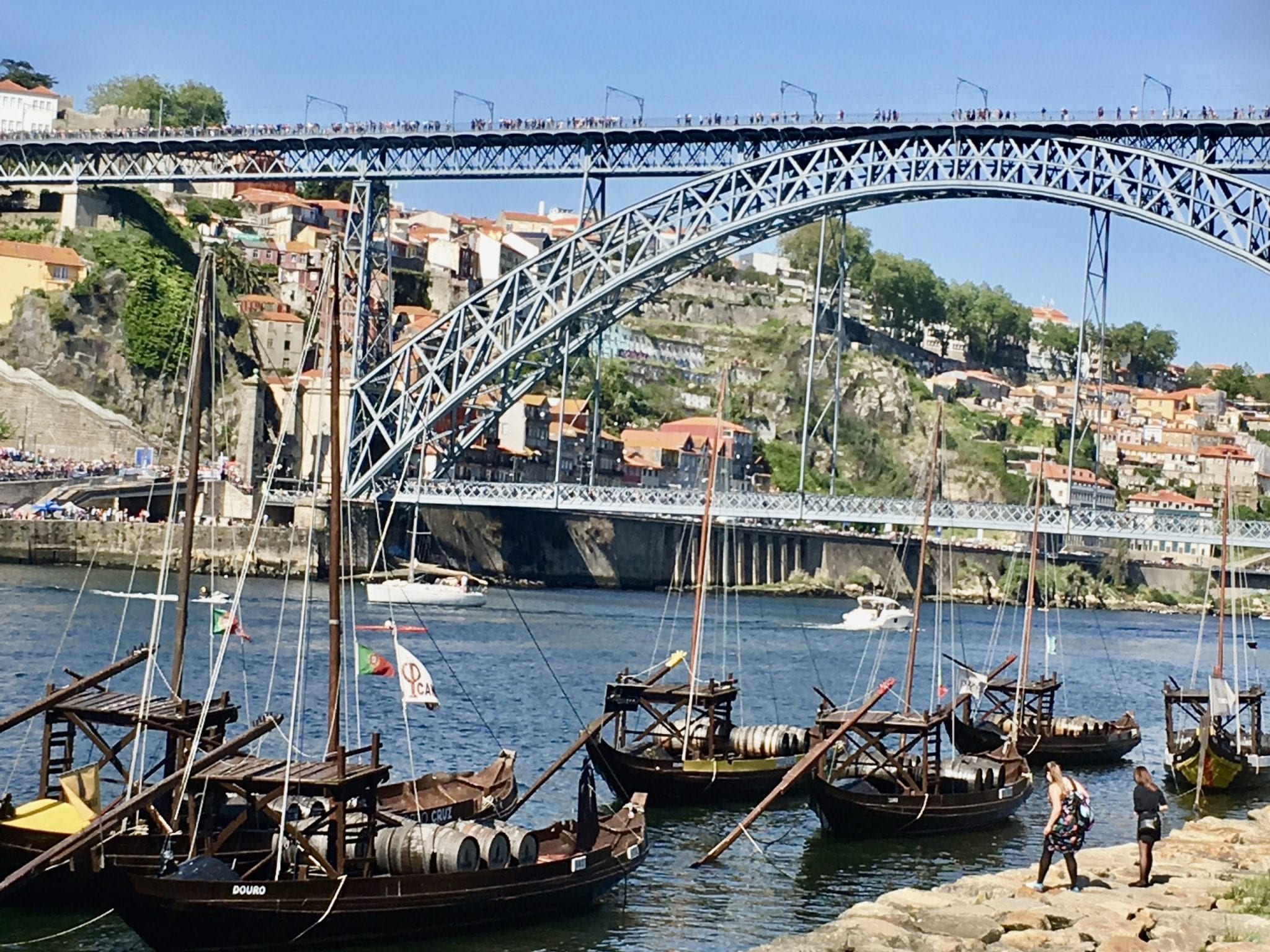
The flat bottom boats, dating from the 17th Century, when they were designed to carry wine barrels from the vineyards of the Douro Valley to wine cellars in Vila Nova de Gaia, still ply up and down the river – now they mainly ferry tourists.

The river divides Porto on the north side, with its winding streets and shady arcades of the Ribeiro neighborhood, a Unesco World Heritage site…

…from Vilanova de Gaia on the south side, known for its port wine cellars and tasting rooms.

Framing everything is the Dom Luis 1 Bridge with its broad metal arch capturing the view. The uppermost deck has two train tracks, with pedestrian walkways on either side, the lower deck is used for cars and buses. It is iconic; one of the ‘must-do’s’ when in Porto is to walk across the bridge, from one side to the other, and marvel at the vistas.


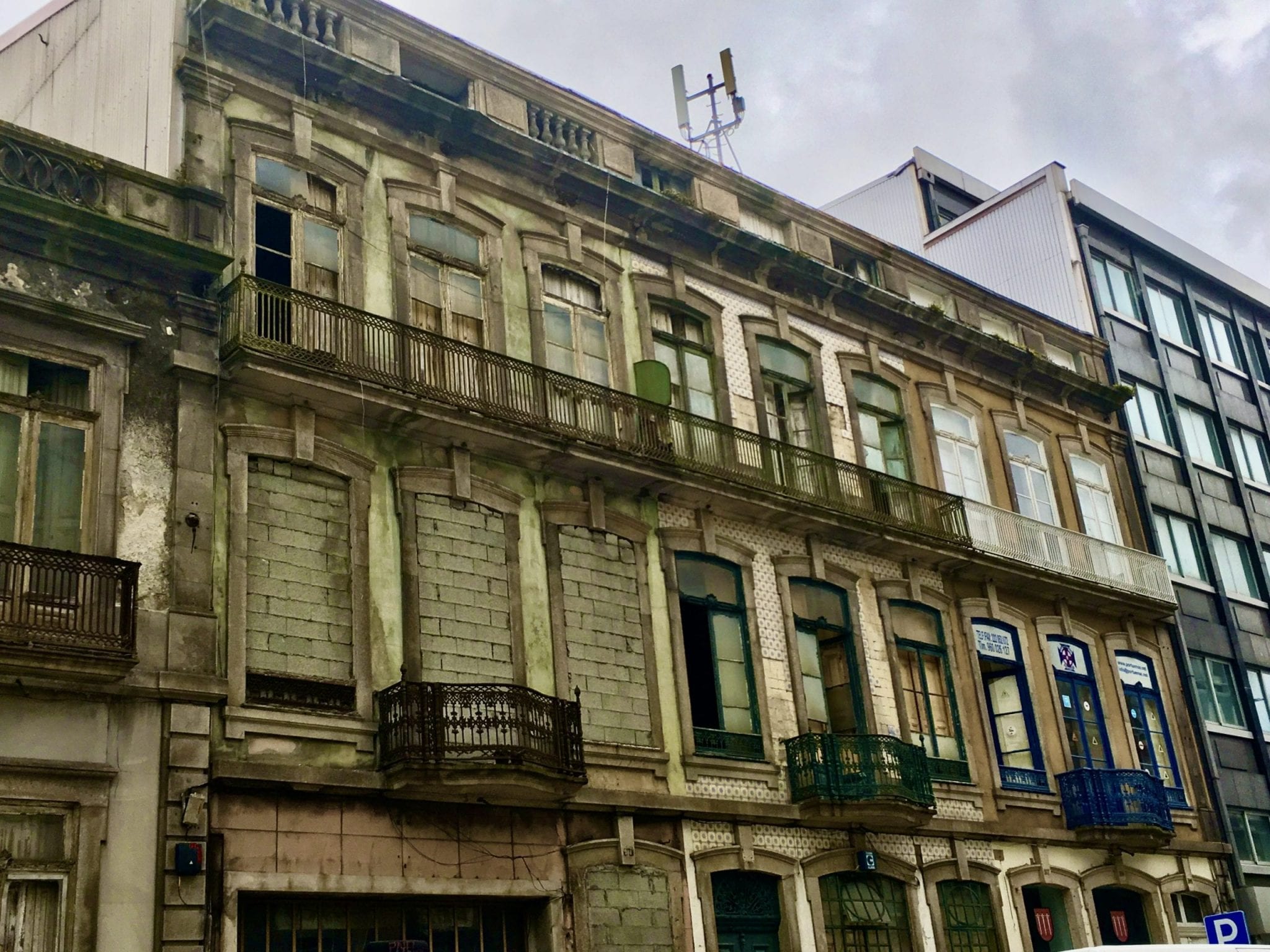

Walking the ancient cobblestone streets and winding arcades of Porto, I was taken by its aging beauty. It is a constant work in progress. Restored mansions sit beside derelict tumbledown buildings, their doors secured only with rusting locks, and glass windows that are often broken with openings bricked up to keep the vagrants out. I was told in 2011, the entire city was dilapidated and the roads were worn with potholes. It is only with the help of the loan from the International Monetary Fund that they have been able to redo the roads!

Speaking of holes, there are several buildings with huge holes in the roofs, letting in the rain and the elements, speeding up the deterioration. Why? Because the owner of any house with a hole in the roof pays no taxes — so the owners punch holes in the roofs!!
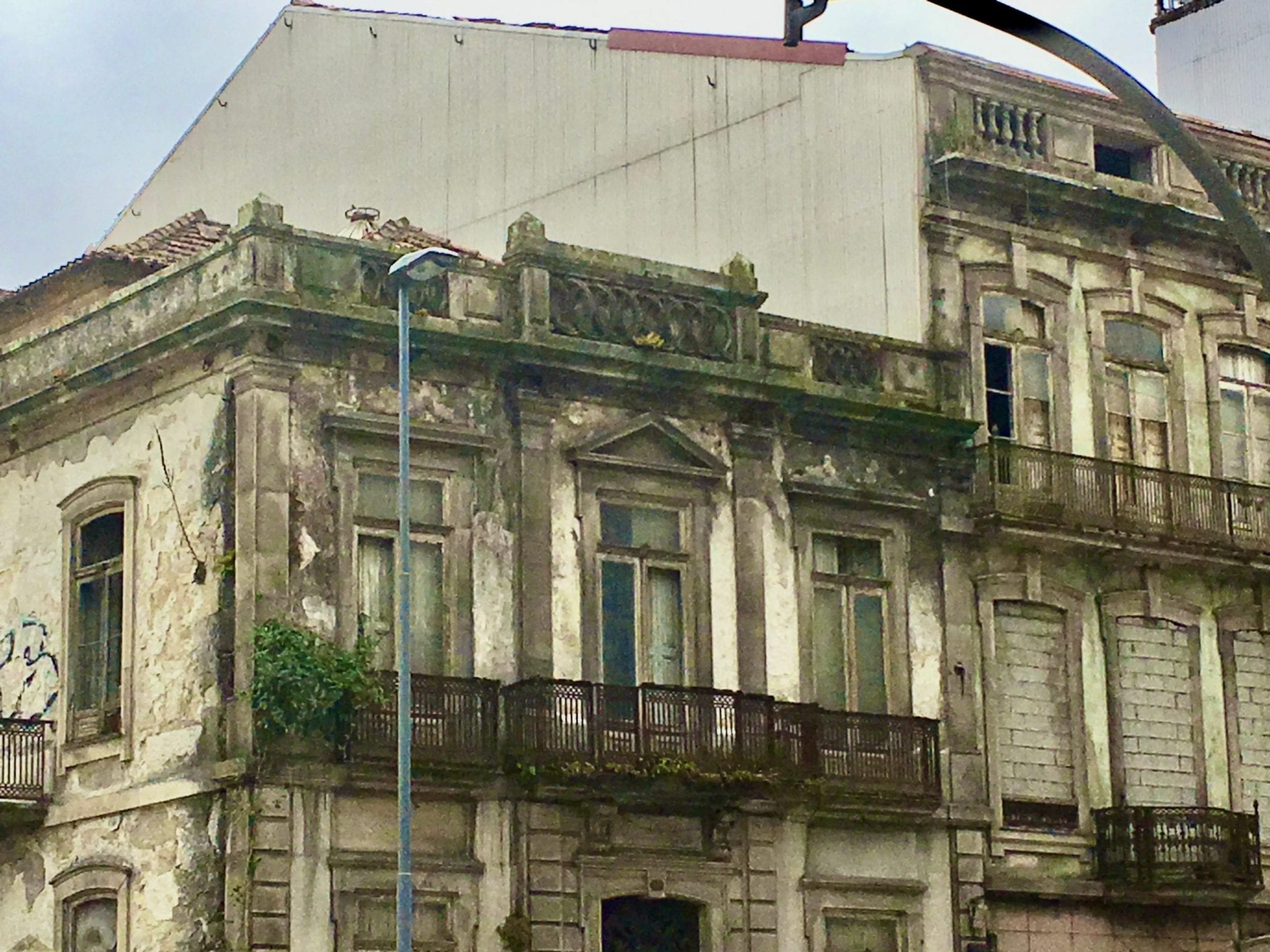
After some serious ups and downs (maybe more downs) in recent memory, Portugal was fiscally bankrupt. Already financially impaired, it required only the 2008 worldwide crisis for a coup de grâce. Borrowing 87 Billion Euros from the International Monetary Fund in 2011 and adopting the more worldly Euro in favor of its Escudo for their currency, Portugal’s leaders took ownership of their problems and went about implementing changes. The rest of the world looked on in bewilderment, not believing the loan would ever be repaid and sure that Portugal would default on its commitment. Happy to say, they did not.
One of the new plans to attract foreign currency was the introduction of a Golden Visa. This is not unique: several countries have done the same. The difference is that the conditions leading to gaining the Portuguese Passport via the Golden Visa make it the easiest route to a passport being offered by any country.
There are various levels of investment to acquire the visa, but the one that has brought in the most foreign currency allows the applicant to deposit 350,000-500,000 Euros in a Portuguese bank, earmarked strictly to invest the funds in Real Estate. Following that, the applicant needs to spend two weeks in Portugal the first year and one week in each subsequent year. The rest of the year they can go home and play or get on with their lives, unhampered. In the fifth year, provided they can prove they have invested the money and have the relevant documents, they do a simple exam answering a few questions in Portuguese and are then awarded a passport! (This is somewhat oversimplified and needs an immigration lawyer to hand the details). I would call it the Golden Passport rather than the Golden Visa because it opens up all twenty-six of the Schengen countries in Europe, that can be entered visa-free, the equivalent of borderless.
In addition, on being issued the Visa (not the passport!) the applicant is free to travel in or open a bank account or business in any of the 26 Schengen countries. That is from day one, no restrictions.
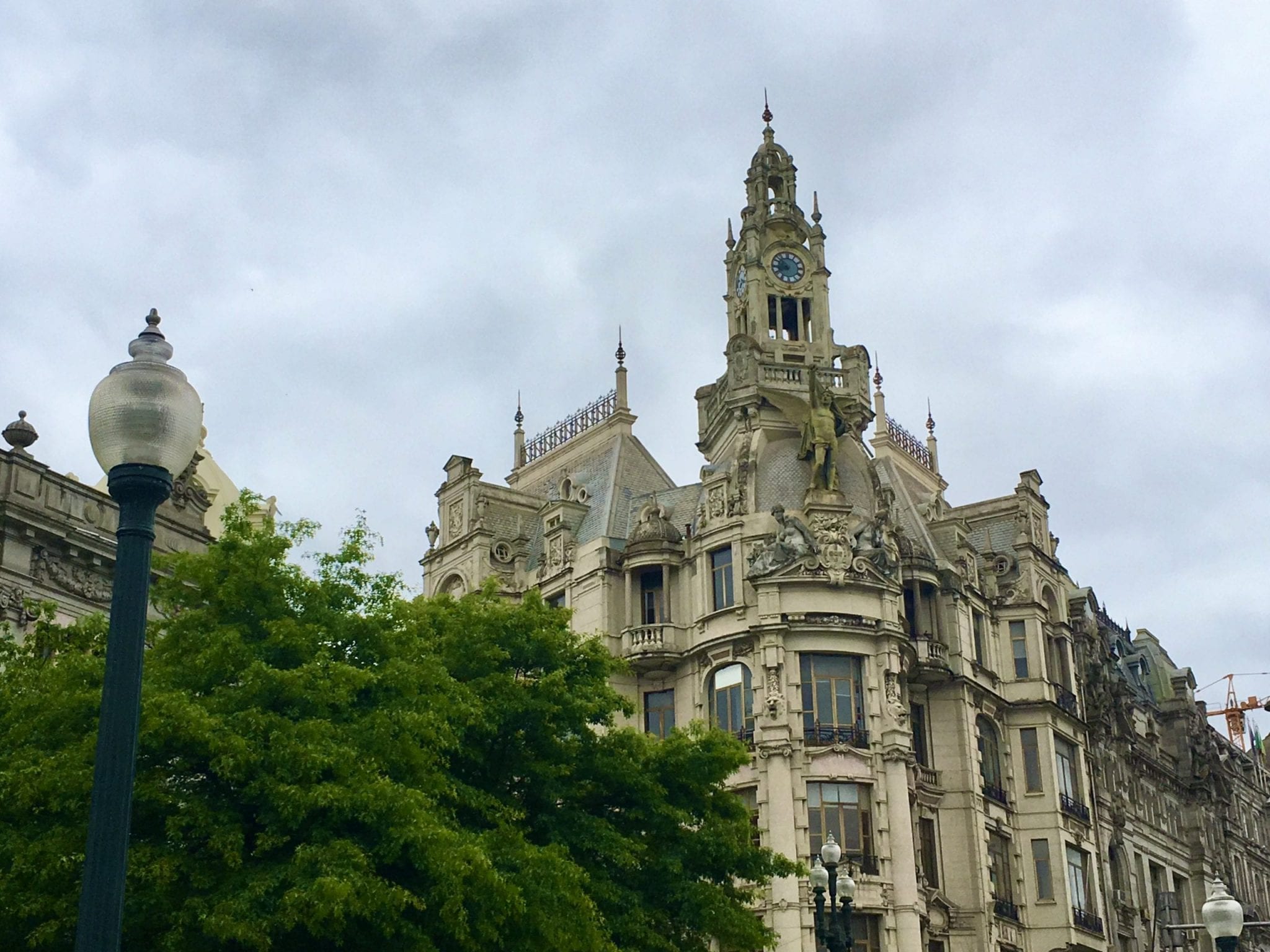
Immediately, the undervalued real estate market came off life support and was resuscitated. As might have been predicted, prices went up far faster than was healthy. Granted, with the injection of currency, many of the derelict homes were restored, which in turn created jobs. It also attracted qualified and creative people, who opened hotels; there was a resurgence of restaurants that has led to an interesting gastronomic scene and bars with sommeliers creating fancy cocktails; galleries opened and now there is a vibrant arts scene. It was amazing, especially as it happened in a few short years – and there is plenty more to come. At the same time, many Portuguese who had left when the economy was struggling, returned home to participate in the recovery.
The downside was that it also attracted a few arms dealers and drug lords looking to launder their ill-gotten gains — every country offering a Golden Visa encounters this problem. It also brought in investors who did not respect the historic integrity of the neighborhoods and began restoring old houses for AirBnBs, forcing out inhabitants who had lived there for decades and changing the demographic and culture of some neighborhoods — another factor that invariably happens in other countries when foreign investors arrive to make a profit.
The largest number of applicants for the Golden Visa have come from China, where there are many millionaires who were looking for access to Europe. Already, the Chinese are building ports and railroads throughout the world — and now, gaining the Portuguese Golden Visa, they have an open door to Europe through which they can expand their companies. This puts Beijing in a position to build an ‘extension’ of the old Silk Road through Europe that will encompass the world.
The Portuguese Government realized they had been over-generous in their hunger for foreign capital and tried to roll back some of the terms … but the genie was out of the bottle.
Those of you who have been reading my blogs regularly will know that I am particularly fascinated with adaptive re-use of space — that is, simply speaking, taking a run-down and often abandoned building that was designed for one purpose, restoring it, and giving it a new life for a different purpose. Portugal in its entirety was a fertile source of supply for investors to move in, and to use their visa to buy up some of these abandoned properties at rock-bottom prices and restore them, giving full meaning to ‘adaptive re-use of space.’
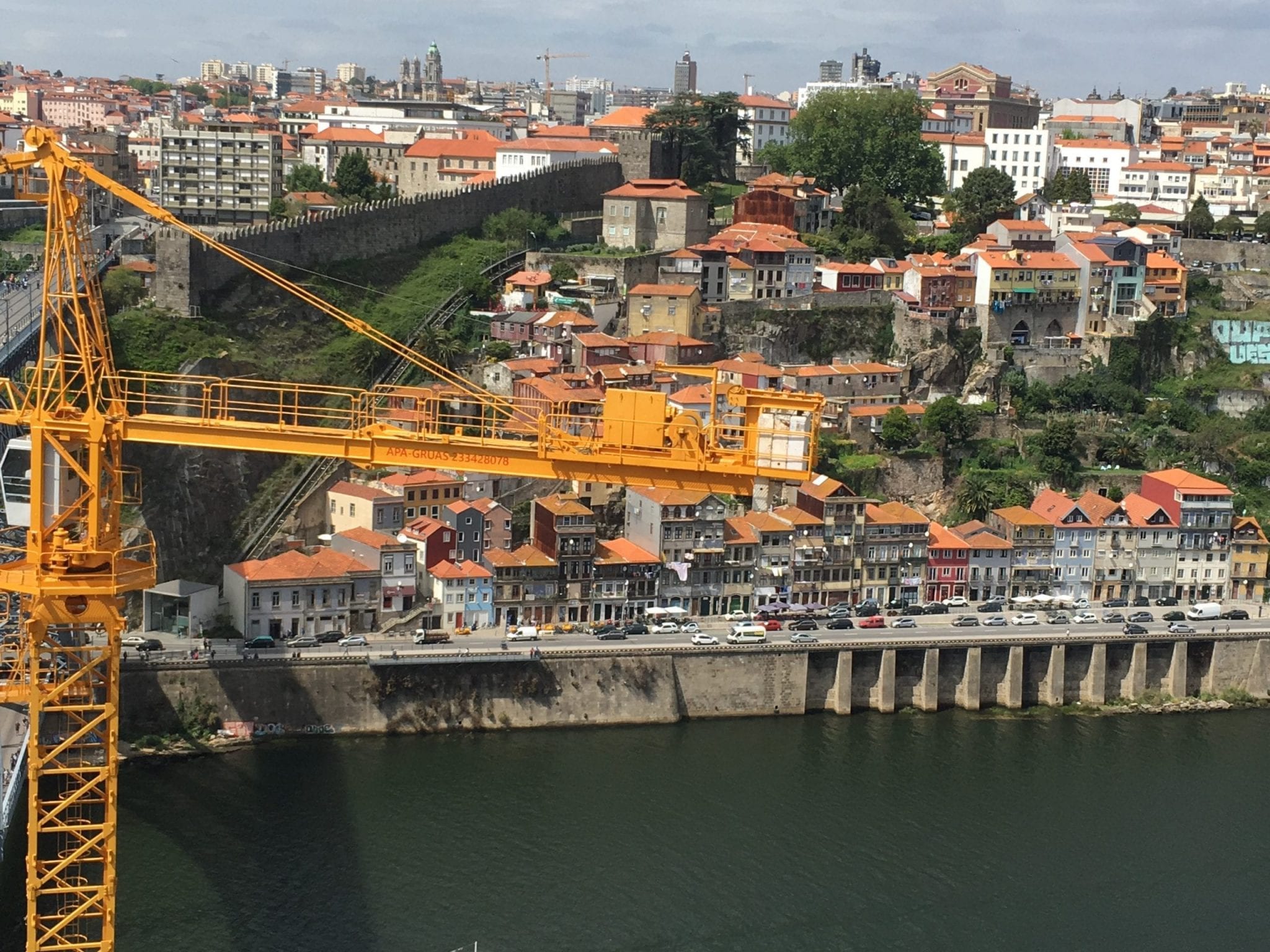
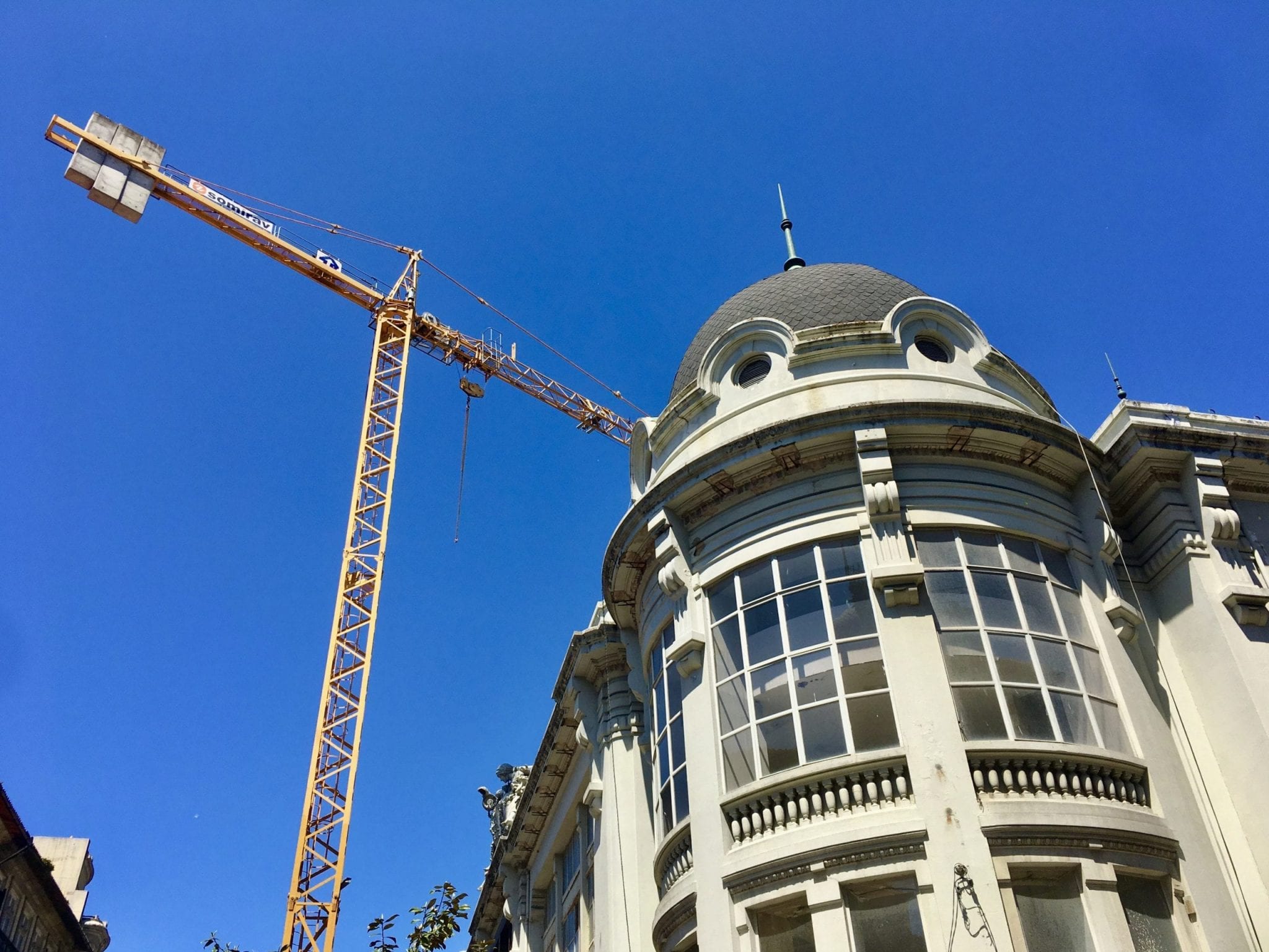

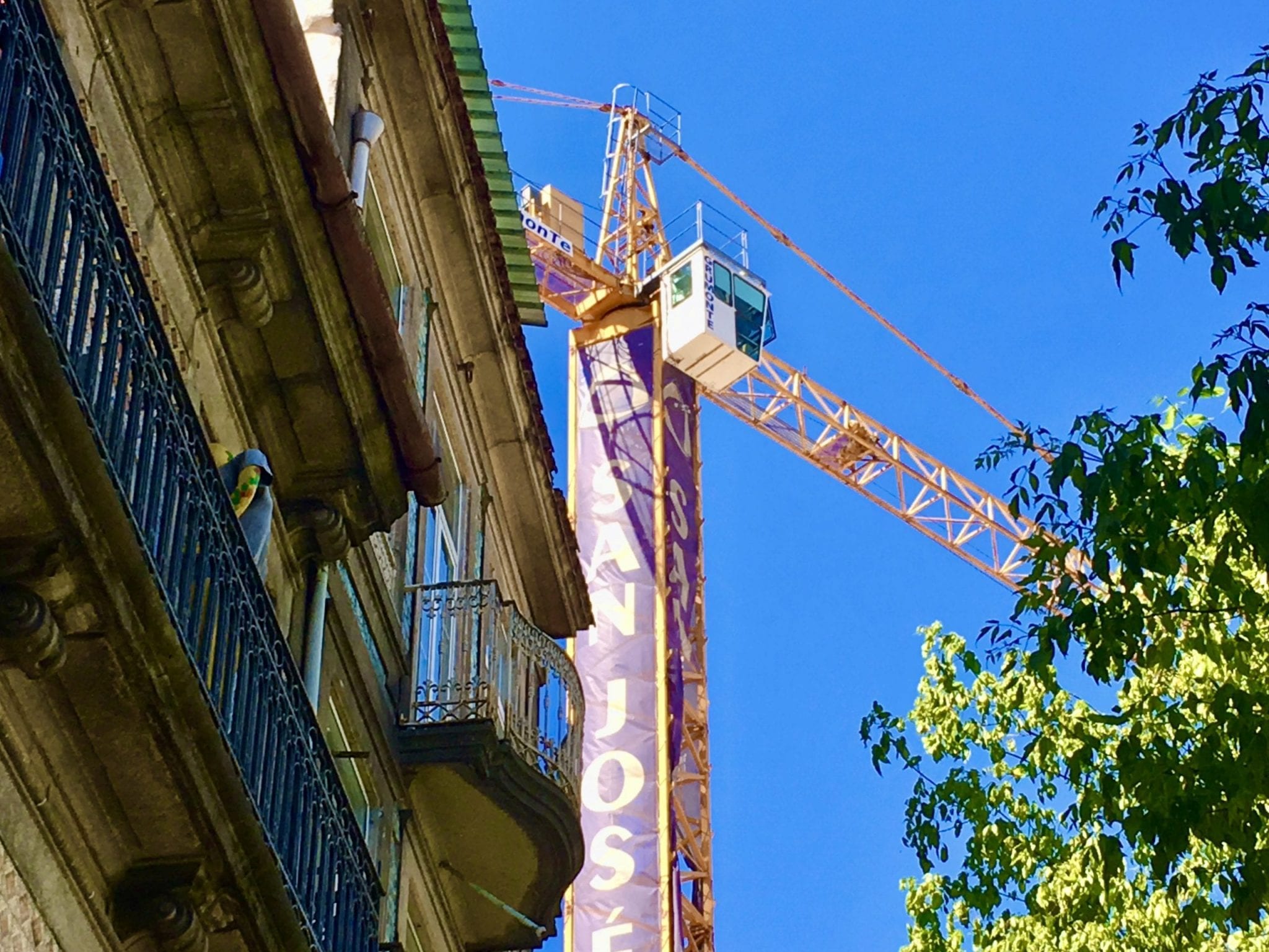
There are cranes everywhere — enormous cranes lifting huge concrete blocks of restored period facades. If cranes are an indication of a vibrant economy, then Porto is on a tear. Every time I pointed the camera to take a photo, there was a crane in the image. It reminded me of those people who scoot into the background of selfies and make finger gestures. I could not keep them out! They were lifting huge concrete facades, ready to be applied to a building, restoring it with period details. Let the crane just drop one of those chunks of concrete and the impact would wipe out any humans, like crushing an ant!
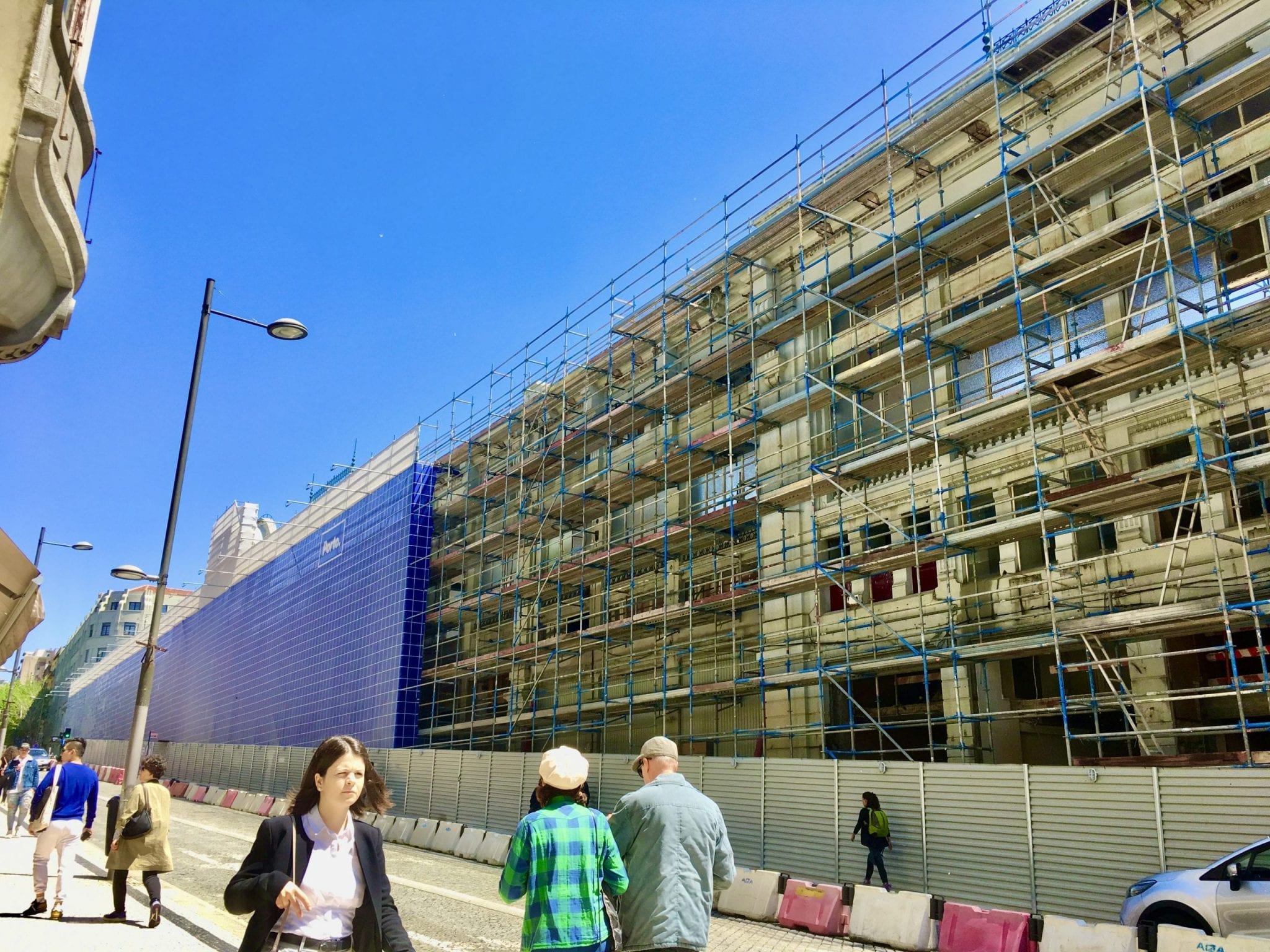
The old market, Mercado do Bolhao, occupying an entire city block is being restored and will be the largest market in Europe when it is finished. Unhappily, the intended time to restore it was totally underestimated. Once the workmen began dismantling the roof, they realized the entire market building was in a state of decay. This became a bigger project than planned and will take two more years than anticipated. But it will be amazing when it is finished — Portugal knows how to do restored markets — I’ve seen a few!!
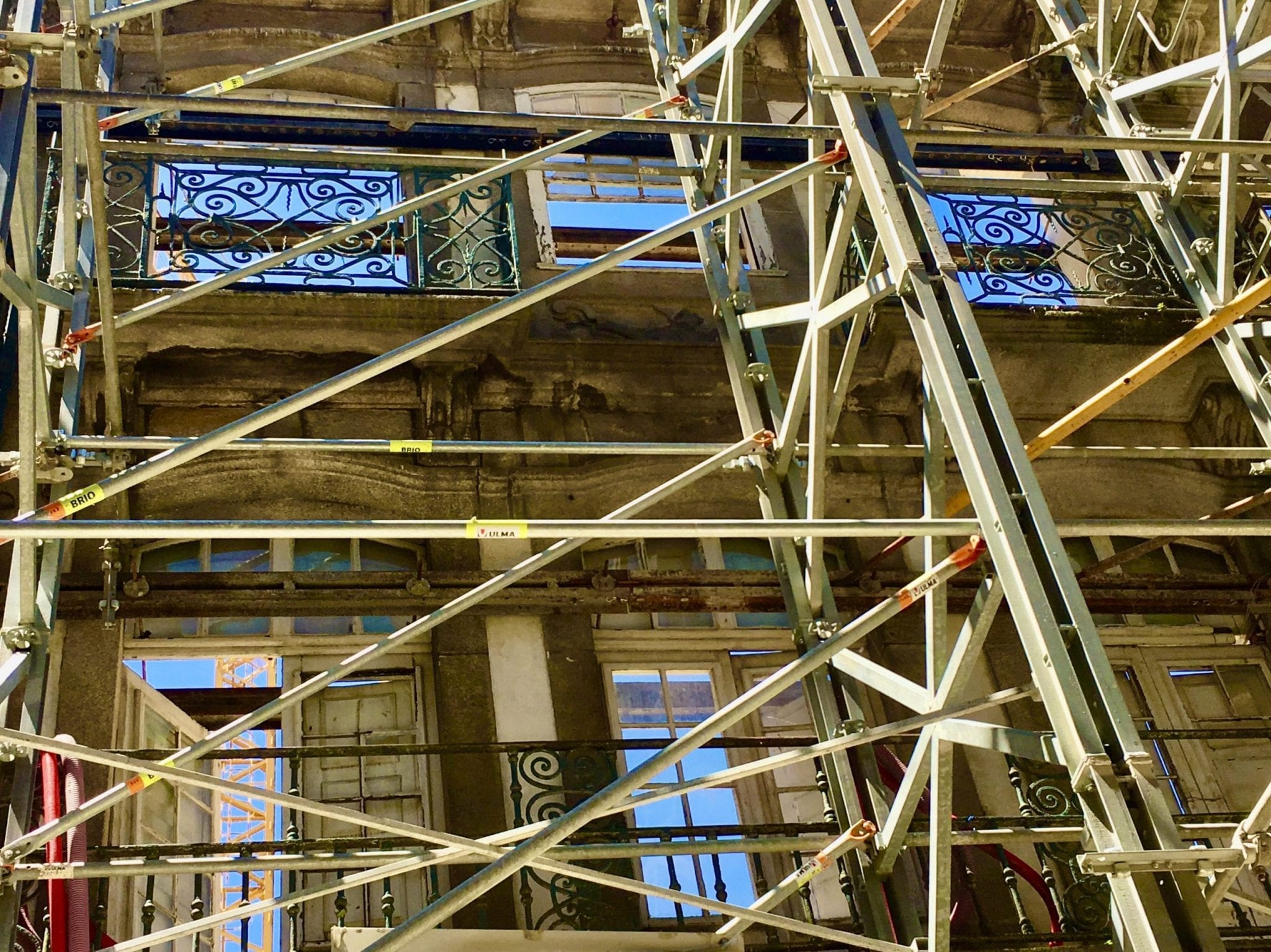

Already, many buildings around the market are in the middle of being stripped down to their trusses before being rebuilt in the inimitable tile-decorated style of the Porto neighborhoods. The old, the new, and the ‘under construction’ are juxtaposed within each block, racing to be ready to catch the next wave of prosperity.

The shell above is at the end of a street, lined with authentic old grocery stores, close to the market, and will be a hotel when finished. When I saw it, it was a skeleton, — and if I ever go back, I will see a hotel because that is what it was designated to be. And nicely located, too, a block away from the market — it is expected that this entire neighborhood will become re-invigorated in anticipation of the market re-opening.

Nearby, I found another adaptive re-use of space: a building that was once a theater that is now a hotel but retaining many of its original theatrical features. It has thick velvet curtains, plush leather furniture, some of it saved from the theatre and original theatrical costumes encased in glass, donated by one of the most famous actors in Portugal — not a bad ‘adaptation.’

Speaking of theaters, the hotel I stayed in had also been a decaying theatre/movie house. Having once been pristine, drawing crowds of elegant people and being known mostly for showing the first sound movie featuring Al Jolson, it had deteriorated so extensively, all that could be saved was the facade — and that had to be restored using the original archived drawings. Even the paint color was matched to a description of the original color. It now fronts a modern hotel with memories of the movie house throughout.
This city is in transition — it is “happening” and compared to the rest of Europe, it is reasonably priced. But not for long. After the pandemic, when the tourist industry recovers, prices will again increase.
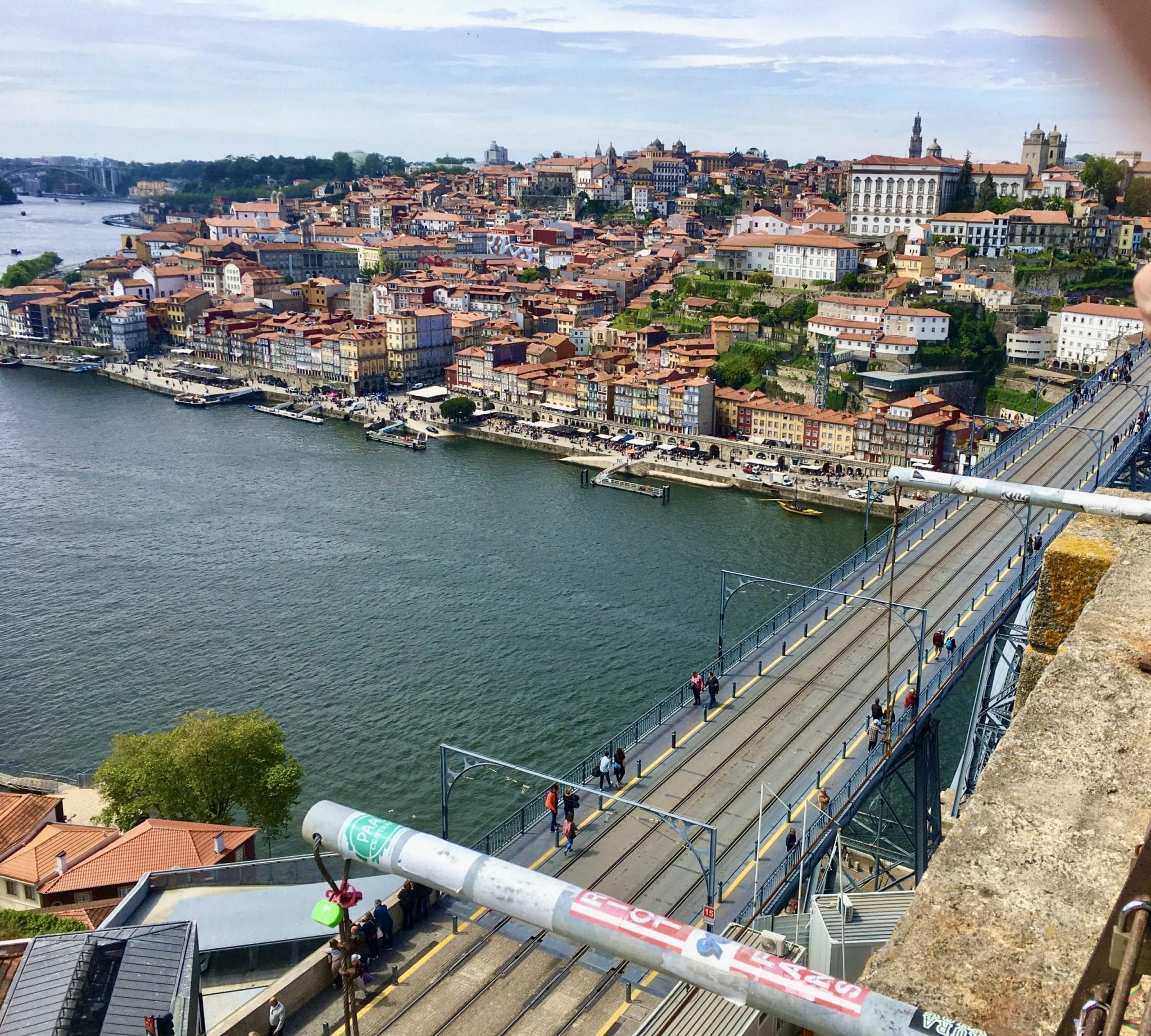
The price of real estate has gone up so fast that a year ago they were saying the Porto property market was well-overpriced and ready for a correction. While not what the economists imagined, the pandemic certainly burst that bubble!
Now they anticipate that after the pandemic, when the travel market recovers, property values in Porto will again increase — for very good reason.
Possessing Old World charm, Porto nonetheless has a modern lifestyle. Although it has many small crowded streets, both rail and tram transport is efficient and well priced. Uber is good and the cars are spotlessly clean with polite drivers who are trained quite well before being allowed to be part of the Uber tribe.
The cost of living is still manageable. For a moderate price, the city has good dining, excellent wine, international concerts, sometimes performed in the award-winning Rem Koolhaas-designed music center. Visually, it is absolutely spectacular and is close to a selection of wonderful beaches with a sunny climate. Like their weather, the Portuguese are welcoming and warm. And while it is the most western country in Europe, it is easily accessible to the rest of Europe and the world through its international airports and a good road system.
In the last few years, Porto has attracted multinational companies who bring in skilled employees — but they also employ locals. Co-working spaces have opened attracting location-independent workers (digital nomads), a trend that is expected to increase after the pandemic.
English is spoken nearly everywhere and is the language of business (there have been English ex-pats living in Portugal for years). Immigration, therefore, is easier. The infrastructure is good, with excellent roads and highways — better than in California where I live! However, tolls and the cost of gas are expensive. The hospitals are modern and up to date and medical care is good.
While Porto may be the “second” city in Portugal, after Lisbon, it has become a modern cosmopolitan city attracting desirable immigrants and a floating population of world travelers. It has a little of everything and is a very complete metropolitan city, as tends to happen to Golden Visa destinations.
The Golden Visa has been written up in every major newspaper all over the world — and Porto and its charm have been written about now ad infinitum. The positive publicity has been non-stop, generating hordes of visitors. Make no mistake, when the recovery comes (and it will) prices will begin to rise again. The tourists will return and the charms of this ancient city will continue to be diluted with the arrival of the ‘new invaders’ like a foreign army, who will effectively change the dynamic of this exquisite place forever. Such is progress. Perhaps I am wrong — I hope so. I am tempted to say: stay just the way you are!!
The Last Word.
Anyone interested in the Golden Visa, please consult an immigration lawyer. What I have described is a loose outline of one of the terms for the Golden Visa.
I was fortunate to do some tours with “We Hate Tourism Tours” and talking to them, I got a deeper understanding of the changes that have taken place since 2011. I recommend if you are visiting Porto or Lisbon, to take advantage of their local insight. Most of their guides are University graduates. Highly recommended.<
WE HATE TOURISM TOURS.
R. do Alferes Malheiro 211, 4000-057
Porto,
T. 351/913776598
www.wehatetourismtours.com


Wow, I was in Porto about 30 years ago!! A very different city today.
Hope you are staying well. Certainly a hard time for those of us who love to globe trot. However, grateful for my home, health and will dream about my next travel adventure. Always enjoy your posts.
One thing I can assure you, most of old Porto is still intact. The Ribeiro with its medieval bsuildings, arcades and winding lanes is untouched on the exterior, as are the views. Being the travelers you are, fortunately you saw it before the hordes of tourists with their selfie cameras arrived.
I share your gratitude for what we do have in these troubling times.
Thanks for reading.
Phyl.